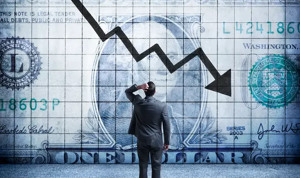Tavex uses cookies to ensure website functionality and improve your user experience. Collecting data from cookies helps us provide the best experience for you, keeps your account secure and allows us to personalise advert content. You can find out more in our cookie policy.
Please select what cookies you allow us to use
Cookies are small files of letters and digits downloaded and saved on your computer or another device (for instance, a mobile phone, a tablet) and saved in your browser while you visit a website. They can be used to track the pages you visit on the website, save the information you enter or remember your preferences such as language settings as long as you’re browsing the website.
| Cookie name | Cookie description | Cookie duration |
|---|---|---|
| tavex_cookie_consent | Stores cookie consent options selected | 60 weeks |
| tavex_customer | Tavex customer ID | 30 days |
| wp-wpml_current_language | Stores selected language | 1 day |
| AWSALB | AWS ALB sticky session cookie | 6 days |
| AWSALBCORS | AWS ALB sticky session cookie | 6 days |
| NO_CACHE | Used to disable page caching | 1 day |
| PHPSESSID | Identifier for PHP session | Session |
| latest_news | Helps to keep notifications relevant by storing the latest news shown | 29 days |
| latest_news_flash | Helps to keep notifications relevant by storing the latest news shown | 29 days |
| tavex_recently_viewed_products | List of recently viewed products | 1 day |
| tavex_compare_amount | Number of items in product comparison view | 1 day |
| Cookie name | Cookie description | Cookie duration |
|---|---|---|
| chart-widget-tab-*-*-* | Remembers last chart options (i.e currency, time period, etc) | 29 days |
| archive_layout | Stores selected product layout on category pages | 1 day |
| Cookie name | Cookie description | Cookie duration |
|---|---|---|
| cartstack.com-* | Used for tracking abandoned shopping carts | 1 year |
| _omappvp | Used by OptinMonster for determining new vs. returning visitors. Expires in 11 years | 11 years |
| _omappvs | Used by OptinMonster for determining when a new visitor becomes a returning visitor | Session |
| om* | Used by OptinMonster to track interactions with campaigns | Persistent |
| Cookie name | Cookie description | Cookie duration |
|---|---|---|
| _ga | Used to distinguish users | 2 years |
| _gid | Used to distinguish users | 24 hours |
| _ga_* | Used to persist session state | 2 years |
| _gac_* | Contains campaign related information | 90 days |
| _gat_gtag_* | Used to throttle request rate | 1 minute |
| _fbc | Facebook advertisement cookie | 2 years |
| _fbp | Facebook cookie for distinguishing unique users | 2 years |
What is a Bull Market: Meaning and Examples

Economics, business, and investing often involve specific terminology and acronyms that can confuse new investors or people just entering the field.
One of the most commonly used terms which causes confusion is: “the bull market“.
In this article, we will explain what the concept means, where it comes from, and we will look at the opposite of the bull market – “the bear market“.
Significance of Bull Market

The definition of a “bull market” is actually quite simple.
According to the US Securities and Exchange Commission (SEC), a bull market is:
“A period when stock prices are rising and market sentiment is upbeat. Typically, a bull market is seen when a broad stock index gains 20% or more over a period of at least two months”
In other words, a bull market means that the market (most often the stock market) sees a constant and significant increase in the value of its assets (such as stocks, bonds, etc.). Bull markets often accompany periods of economic growth.
Characteristics of a Bull Market

The main characteristics of a bull market are the following:
- Investor optimism and confidence: Bull markets are characterised by positive expectations for long-term good results.
- Economic growth: The economy is booming, unemployment is low, and interest rates are generally lower.
- Growth in asset values: The prices of stocks, bonds, commodities or real estate are constantly rising, and trading volume is increasing significantly.
- Increased liquidity: Buyers outnumber sellers.
- Increased Dividends: Companies that are performing well often increase their dividends to make their stock more attractive.
- Difficult to recognise at the beginning: The beginning of a bull market is often noticed late by analysts.
- Risk of Overconfidence: Investors can become overconfident and take unnecessary risks.
When assets prices rise and bring in profits, more people are encouraged to buy and thus support growth. Because bull markets usually occur during strong economic periods, investors feel financially stable and tend to invest more funds.
However, there is a real risk that investors become overconfident and take too many risks during bull markets – a phenomenon known as irrational exuberance . People can experience fear of missing out and jump into risky investments without prior research, as happened with the rise in popularity of “meme stocks” during the 2021 pandemic bull market.
Monetary policy also plays a significant role in a bull market. Every central bank decision sends signals and stimuli to the market. Often credit expansion and quantitative easing (money printing) can create a monetary illusion and lead to a market bubble .
During periods when cheap credit floods the financial markets, most indexes rise as a wave of new investment floods in
This causes prices to rise “unnaturally”, which in turn signals to other investors that they should also invest, leading to another rise in prices. This creates a cycle that can cause the market to become massively overvalued.
We most recently saw this during the US market rally during the COVID pandemic. In the presence of abundant government aid, many investors – both individual and corporate – flooded the market, resulting in substantial gains followed by a sharp decline.
Examples of Bull Markets

A bull market is any extended period in which asset prices have risen by more than 20%. This means that most periods of economic growth usually coincide with bull markets.
- The longest and most significant bull market was from 2009 to 2020, which began after the slow recovery process from the 2008 financial crisis. This is the longest bull market in US history. During that period, the S&P 500 rose 375%, with an average annual return of about 15%.
- A significant bull market in recent history occurred between 2003 and 2007. During that time, the S&P 500 increased significantly after a previous decline. When the financial crisis of 2008 began to have an impact, large declines occurred that ended the bull market.
- The Roaring Twenties (1920 – 1929) – A period of massive increases in the stock markets, fueled primarily by speculation and an increased money supply. It was a period of rapid economic growth followed by the greatest crash ever recorded, the Great Depression. The Roaring Twenties are a textbook example of the boom and bust cycle.
As we can see from these examples, the bull can only rush forward for a certain amount of time.
What is a ‘Bear Market’ and How Does it Differ from a ‘Bull Market’?

A bear market is the exact opposite of a bull market.
According to the US Securities and Exchange Commission (SEC), a bear market is:
“A period when stock prices fall and market sentiment is pessimistic. Typically, a bear market is seen when a broad stock index declines 20% or more over a period of at least two months.”
Bear markets usually occur at the end of the business cycle and are often associated with the consequences of central bank monetary policy decisions.
More on the topic: Is gold a good investment during a crisis
Bear markets are characterised by falling asset prices and pessimistic sentiment. The economy is usually contracting, stagnating or in a period of low growth.
Investors are concerned and uncertain and tend to turn to safer investments, such as bonds or investment gold.
Similar to bull markets, where investors see rising prices and invest so as not to miss the opportunity, in bear markets investors see falling prices and sell immediately to avoid greater losses.
This drives prices down even further and signals other investors to pull out as well
This process creates a negative feedback loop leading to record lows in the market.
Some of the most famous examples of bear markets occur at the end of the bull markets we’ve covered:
- The Great Depression (1929 – 1939) – followed the stock market crash of 1929 and ushered in the worst economic recession ever recorded.
- Dotcom bubble (2000 – 2002) – this market crash occurred due to overvaluation of technology stocks in the 1990s.
- The Great Recession (2007 – 2009) – followed the collapse of the real estate market in the United States.
Key Takeaways
The term bull market refers to a period of optimism among investors, growth in asset prices, and a generally positive economic outlook.
However, this growth is often fuelled by cheap credit or excessive investor optimism, which can lead to market bubbles and subsequent crashes.
Economists coined the terms bull and bear markets to metaphorically express that investors in financial markets are driven by “animal instincts” – the bull and the bear.
The bottom line is this means that a large part of economic decisions remain emotional or impulsive. Investors follow market sentiment for fear of making a wrong move. Often this leads to bubbles forming in bull markets or excessive losses in bear markets.


















